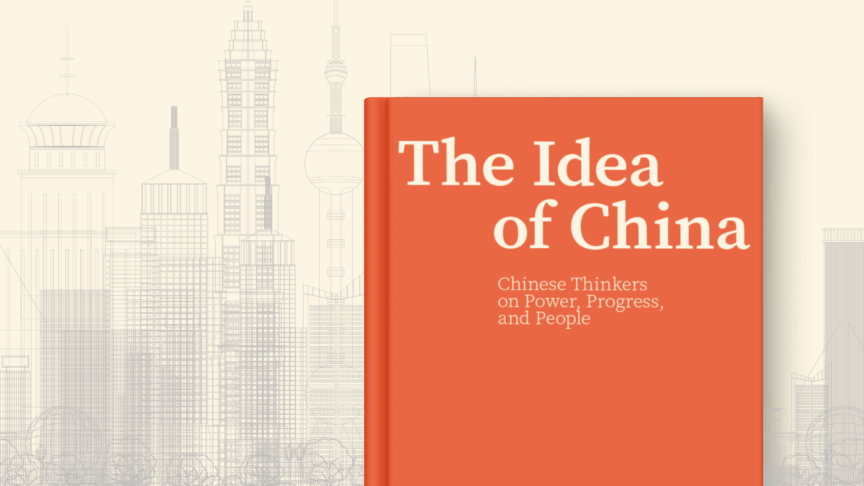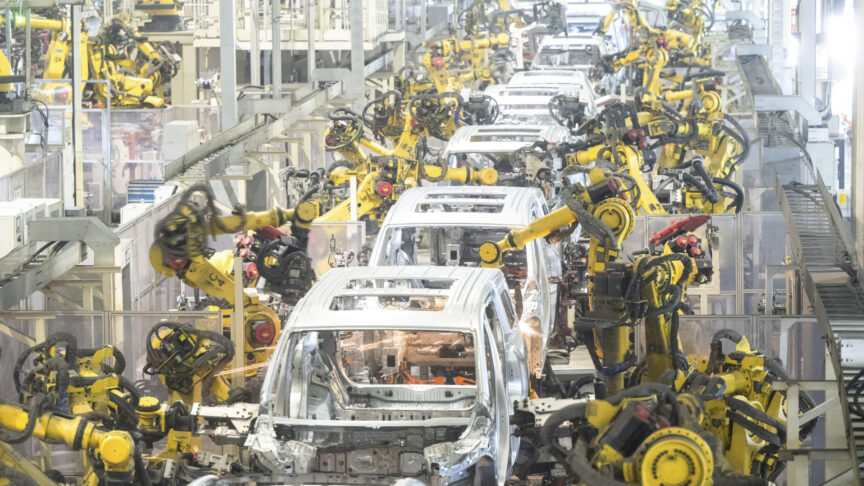Ambitions and access: The new economic framework for the Indo-Pacific
The new US-led economic framework for the Indo-Pacific may have limited power to manage China’s ascendence. But the EU has good reasons to pay attention to the discussions around it
On 23 May, with the eyes of the European Union turned to its eastern borders and the war in Ukraine, US President Joe Biden and 12 of his counterparts from Indo-Pacific countries officially launched the Indo-Pacific Economic Framework for Prosperity (IPEF). Their joint statement set out plans for “collective discussions toward future negotiations”, with a focus on four pillars: trade; supply chains; clean energy, decarbonisation, and infrastructure; and tax and anticorruption.
On the first pillar, the aim is to create high standards for inclusive free- and fair-trade commitments, as well as to promote cooperation in the digital economy. To make supply chains more resilient, the IPEF is designed to improve transparency, diversity, security, and sustainability. Clean energy, decarbonisation, and infrastructure will revolve around deepening cooperation on technologies and mobilising finance. Finally, discussions on tax and anticorruption will focus on enforcing effective and robust tax, anti-money laundering, and anti-bribery regimes.
Five years after then-president Donald Trump’s decision to withdraw the United States from the Trans-Pacific Partnership (TPP), the IPEF looks like an attempt to balance the United States’ security-provider role in the Indo-Pacific by reclaiming a larger stake in the economic sphere, as part of a bid to contain China’s influence in the region. However, it remains to be seen whether the IPEF can live up to its potential and achieve its objectives.
The framework’s success rests on the United States’ capacity to attract and organise countries from south-east Asia, south Asia, and the Pacific. But the Biden administration’s phased approach to the launch is evidence of hesitation among participating countries – which have only committed to attending an initial round of discussions. The US initially proposed that the joint statement should announce a commitment to begin formal negotiations on the IPEF text. However, a lack of clarity regarding US objectives for the IPEF, as well as insufficient incentives for participation, discouraged some governments from committing to formal negotiations.
The United States’ Asian partners would welcome American money and technology, but they primarily want trade and market access
To maintain a semblance of unity, the Biden administration had no choice but to aim for a less ambitious goal for the initial phase: discussions to define the scope of the IPEF. It remains uncertain which of the 12 countries – Australia, Brunei, India, Indonesia, Japan, South Korea, Malaysia, New Zealand, the Philippines, Singapore, Thailand, and Vietnam – will ultimately participate in the IPEF.
The main issue is the United States’ decision to exclude market access from the IPEF, while at the same time asking for high standards commitments on labour, the environment, and even digital trade. The IPEF is not a free-trade agreement and even less a traditional trading bloc. To succeed, it will need to focus on efforts to increase regulatory coherence between participating countries – but this is in no way a TPP mark II. Money and technology sharing may be the only incentives the US has to offer (especially on renewable energy).
The absence of market-access commitments raises several important issues. One of these is how to enforce IPEF trade obligations without the possibility of suspending market-access concessions – as is the case in the dispute settlement mechanisms of the World Trade Organization and in free-trade agreements. Another issue is whether an agreement without any enforcement instruments can be effective.
Moreover, participating countries have lingering doubts regarding US intentions. A separate White House statement seemingly alludes to the TPP and free-trade agreements more generally as “past models of economic engagement” that were “leaving [US] workers, businesses, and consumers vulnerable”. Indeed, US domestic political concerns are obvious in the administration’s initiatives, generating unease among its partners with less-advanced economies. For them, the IPEF may appear to be a disguised form of protectionism. The United States’ Asian partners would welcome American money and technology, but they primarily want trade and market access.
To address these difficulties, as well as to ensure that the huge asymmetries between the partners’ economies do not further inhibit participation, the US has proposed that countries engage only with the IPEF pillars of their choice. This, in effect, lowers the barrier to joining the overall framework but also jeopardises its effectiveness: several governments are likely to only join those pillars from which they can gain immediate benefits, without bearing the economic and political costs of the structural reforms that other parts of the IPEF require. Indeed, participation in each of the four pillars may differ significantly as US objectives diverge from those of its partners.
India is an important case in this context. Difficult relations with China are the main driving force behind Indian participation in the IPEF. But India can only expect to gain limited practical benefits from the framework and is unlikely to commit to high trade standards easily. New Delhi’s position on e-commerce and data localisation also differs radically from Washington’s. Therefore, India is only likely to join certain pillars – those that serve its interests.
The IPEF may turn out to be a loose partnership with significant political relevance but limited power to manage China’s economic and strategic ascendence. However, irrespective of the IPEF’s chances of success, the EU would be ill-advised to ignore the forthcoming discussions. While the United States’ overall objectives in the Indo-Pacific may be consistent with the EU’s, US-framed rules for digital trade and technology, for example, could be detrimental to European interests if they de facto created non-tariff barriers.
More importantly, in trade, the EU has the capacity to fulfil some of the needs of participants in the IPEF when the US is unable or unwilling to do so. The union has concluded, or pledged to conclude or resume, trade negotiations with almost all 12 participants, including on issues such as renewable energy and resilient infrastructure. The EU developed its Global Gateway and Strategy for Cooperation in the Indo-Pacific partly for this purpose. Operationalising them sooner rather than later would give the EU an edge in the region.
The European Council on Foreign Relations does not take collective positions. ECFR publications only represent the views of their individual authors.



